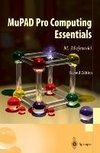
-
 Anglický jazyk
Anglický jazyk
Structural Influences on Self-cleaning Surfaces
Autor: Doris M. Fopp-Spori
This research was carried out at ETH Zurich. It received an ETH Medal and was a runner-up for the 2011 Materials Research Prize. A self-cleaning surface is a surface that can be cleaned by a gentle rinsing with water without the use of detergents or mechanical... Viac o knihe
Na objednávku
26.82 €
bežná cena: 29.80 €
O knihe
This research was carried out at ETH Zurich. It received an ETH Medal and was a runner-up for the 2011 Materials Research Prize. A self-cleaning surface is a surface that can be cleaned by a gentle rinsing with water without the use of detergents or mechanical force (wiping). Such an effect is only observed on very rough, usually hydrophobic surfaces, where the drop sits on top of surface features like a fakir on a bed of nails. In many industries, such as construction, design, and even medical applications, a self-cleaning surface would seem of great advantage. This work gives an easy-to-read introduction into wetting phenomena on rough surfaces, pointing out the challenges researchers face when developing a self-cleaning surface. Two key aspects relevant for the lifetime of the self-cleaning effect were investigated: first, what happens to the effect when the hydrophobic nature of the surface chemistry decreases and second, how the number and, to a certain extent, the shape of surface-drop contact points influence the contact angle and the mobility of the water drop.
- Vydavateľstvo: LAP LAMBERT Academic Publishing
- Rok vydania: 2017
- Formát: Paperback
- Rozmer: 220 x 150 mm
- Jazyk: Anglický jazyk
- ISBN: 9786202017954












